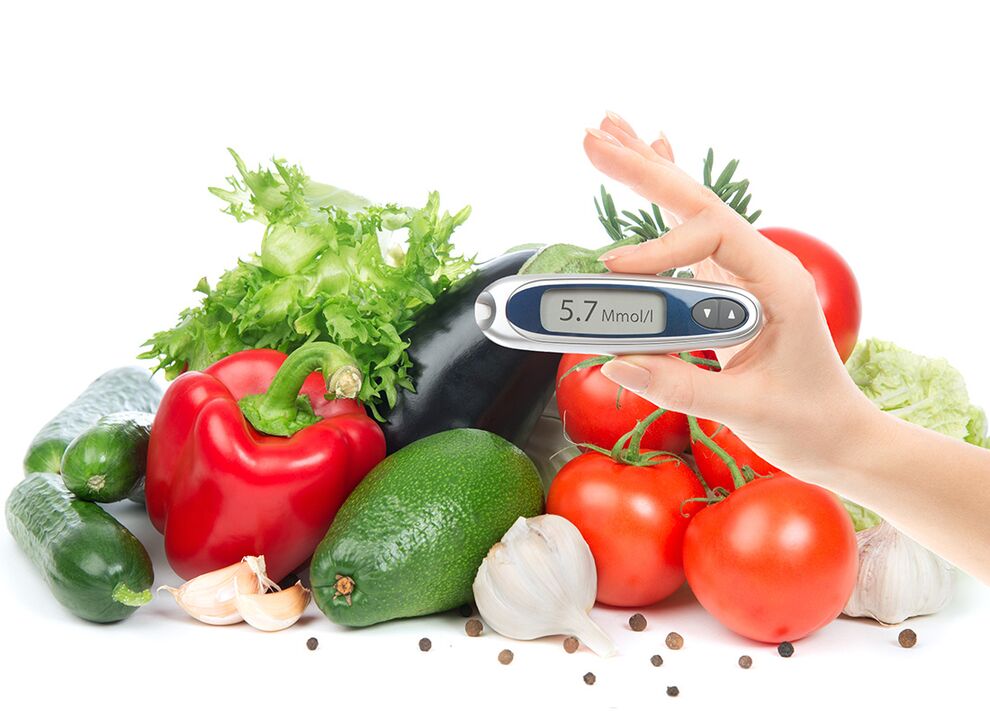
Diabetes mellitus is a disease that worries a person throughout his life, it appears due to a total or partial lack of the pancreatic hormone - insulin. Insulin is a carrier of glucose in the cells of our body, to enrich the blood with nutrients and to saturate the cells with energy.
Many people underestimate the importance of adhering to a diabetic diet. This disease, in essence, is caused by a poor diet leading to metabolic disturbances. It's scientifically proven that it makes no sense to deny that a diabetic diet is a unique way to fight disease.
Hyperglycemia is the main pathogenic stage in the development of diabetes mellitus, in order to avoid that it is worth following a diet. The basis of the diet for diabetes mellitus is an increase in protein intake, a decrease in carbohydrates in the daily diet, as well as fats, which are easily converted into carbohydrate components and their components, which complicates and worsensthis disease. It turns out that by following simple and clear rules of nutrition, you can bring your metabolism and blood sugar back to normal.
How to eat with diabetes
For a diabetic, the question is invariably important - what type of diet therapy is needed for diabetes mellitus and how effective it is. The main food products should be dairy products, vegetables and fruits. Adequate consumption of meat is necessary. It is important to prevent the breakdown of proteins in the body and to monitor the maintenance of glycogen, the natural production of the energy component of the substance in our body. It depends directly on the daily intake of food, rich in protein, as well as trace elements, vitamins and minerals that saturate our body.
The importance of eating beans for diabetes
Beans are one of the richest sources of protein and amino acids. An important variety is the white kidney bean. It contains a large accumulation of non-essential and irreplaceable amino acids which cannot be synthesized in our body, and must be supplied by food sources, these are valine, tryptophan, leucine, methionine, lysine, histidine, phenylalanine, threonine. The product contains vitamins C, B, PP, potassium, zinc, iron and phosphorus.
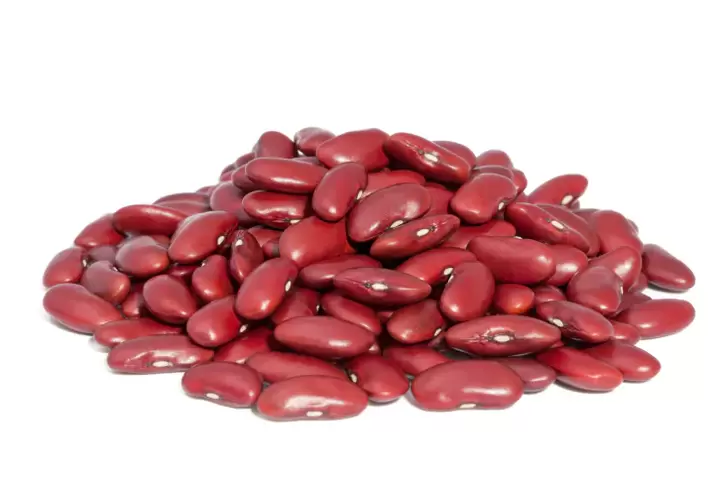
Kidney beans are a legal food for diabetics and are rich in minerals and vitamins.
Beans contribute to the formation of gas in the intestines, which is a somewhat limiting factor when using large amounts. However, if enzyme preparations are used with the use of beans, such an undesirable property can be avoided.
Cereals for diabetes mellitus
It should be noted that one of the important aspects when following a diet is the use of buckwheat porridge. The originality of this cereal is that it does not greatly affect the metabolism of carbohydrates in the body, and maintains the level of glucose at a stable level, without impulsive elevations, than other foods.
In addition to buckwheat, you need to include oatmeal, wheat porridge, pearl barley and corn in your diet, it will be the right breakfast for a diabetic. Cereals are fortified with a variety of vitamins and minerals necessary for the stable and correct functioning of our body, and are also easily digestible. An important factor is that the grains listed above are an excellent source of adenosine triphosphate (ATP) for filling muscle cells with energy.
Fruits to eat for diabetes mellitus
Fruits are the main source of vitamins, minerals and fiber necessary for the normal functioning of the human body. The concentration of these nutrients in this food group is several times higher than in any other food source. An important feature is the almost total absence of glucose and the predominance of fructose and sucrose in the composition.
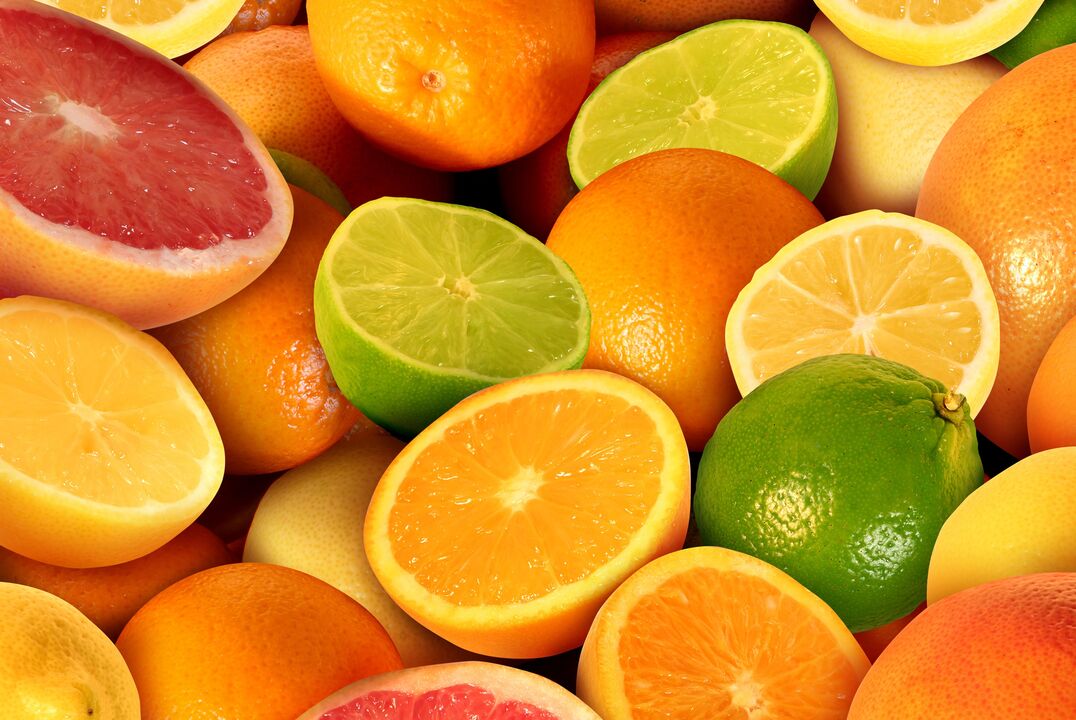
Citrus fruits are the most useful fruits for diabetics, characterized by a low glycemic index.
Let's see what fruits and berries should be included in the diabetes diet.
From fruit:
- pomegranates;
- oranges;
- dried fruits (prunes, dried apricots, dried apples);
- pears;
- mandarins;
- grapefruit;
- nectarines;
- lemons;
- apricots;
- apples.
From berries:
- any type of currant;
- gooseberry;
- Blackberry;
- Cherry;
- blueberry.
Melon and watermelon should be eaten in moderation and in limited amounts, as these foods have a higher carbohydrate content.
Anyone with diabetes should pay more attention to fruits such as grapefruit, lemon, and tangerines for a number of reasons:
- rich in vitamin C. The importance of vitamin C for the human body can hardly be overstated. Scientifically proven that it is important for strengthening the walls of blood vessels, as well as the work of enzyme systems;
- one of the best qualities of citrus fruits is their low glycemic index. This is explained by the fact that the effect of the carbohydrate components of these fruits has very little effect on blood sugar;
- possessing powerful antioxidant capacities which inhibit the development of complications of diabetes by stopping the negative effect of hyperglycemia on the cells of our body.

Fresh juice. Diabetic diet is no reason not to indulge yourself!
A quick note on citrus juices. Try to avoid buying juices, even natural juices, from regular stores, as they contain carbohydrate components and sugar, it can cause blood sugar levels to rise. Your best bet would be to buy fresh fruit and make the juice from a truly naturally grown product.
What should not be taken with diabetes mellitus?
Every diabetic should know what not to eat with diabetes mellitus. If you consume all foods without exception, without knowing their glycemic index in advance, this can lead to the gradual development of hyperglycemia followed by hyperglycemic coma.
A diabetic diet should not contain prohibited foods.
Flour and baked goods:
- White bread, in particular freshly baked goods;
- All rich products;
- Puff pastry.
Meat and seafood products:
- Smoked products;
- Rich meat broths;
- Meat of certain birds (duck, goose);
- Pork and fatty beef;
- Fatty fish.

With diabetes, fatty and spicy meat products will have to be abandoned in favor of dietetic meat (in limited quantities).
Fruits and dried fruits prohibited in diabetes mellitus:
- Bananas;
- Grape seed;
- Appointment;
- Figure;
- Strawberries;
- Grape.
Dairy products:
- Fat sour cream;
- Whole milk;
- High fat kefirs and yogurts;
- Butter (especially homemade).
Vegetable dishes:
- Potato;
- Pea;
- All pickled vegetables.
Other food products:
- Sugar;
- Candy;
- Butter cookies;
- Fruit juices (store);
- Any food in fast food establishments.
On the dangers and benefits of eating dates, coffee, and honey for people with diabetes
It's no exaggeration to say that everyone loves these products, and it's hard to give up those little joys of living due to diabetes mellitus. Therefore, we will analyze separately whether you can use them in your diet or not.
Honey
As they say, how many people, so many opinions. There are many articles published in magazines and various health blogs on the use of honey by people with diabetes. Logically think that in the structure of honey there is a high content of fructose, this carbohydrate ingredient is unable to significantly change the level of glucose in a person's blood. However, we cannot ignore the fact that for the assimilation and metabolism of fructose we need insulin, which, for example, in type 2 diabetes, simply cannot fully fulfill its purpose. Consuming honey in this case will lead to an increase in blood sugar in people with diabetes, in turn, it will not bring anything bad to a healthy person.
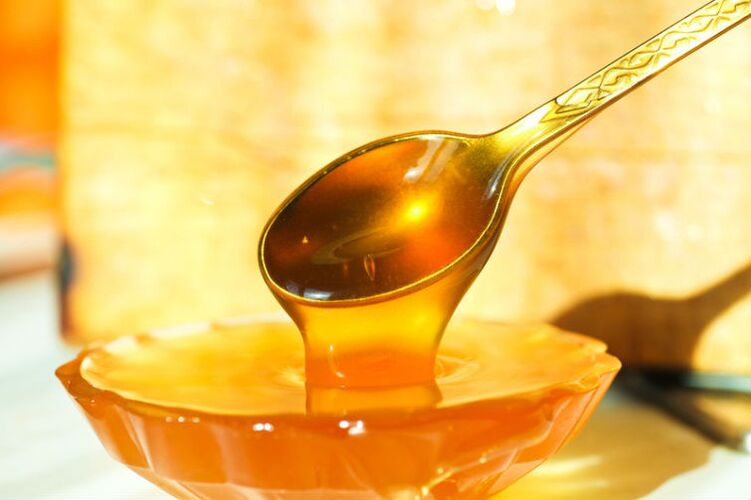
Can honey be used for diabetes or not? There is constant debate, but it is unanimously agreed that a spoonful on an empty stomach will not hurt, but will be useful.
Based on these facts, for diabetics, conclusions can be drawn:
- Honey, as a useful substance for the body, should be present in the diet.
- Do not consume more than two tablespoons per day.
- For optimal effect, it is best to eat a spoonful of honey on an empty stomach and drink it with a glass of water. This is due to the fact that honey is converted into glycogen and will serve as the starting point for the generation of energy and the synthesis of useful substances in the body, functioning throughout the day. Most often, a small amount of this product is still included in various diet reminders for diabetes.
Appointment
A very controversial product to include in the diabetes diet. They contain a huge amount of calories and fast carbohydrates, however, they contain a lot of potassium and vitamin A which serves as a bias for diabetic complications.
Based on these facts, it is recommended:
- It is strictly forbidden for diabetics with a severe form of this disease to use dates.
- With a mild form of diabetes, corrected by compliance with a diet and hypoglycemic drugs, the use of a small amount is allowed, provided that the daily intake does not exceed 100 grams.

Diabetics are strongly advised to refuse coffee.
Coffee
People with severe diabetes are strongly advised to avoid this product regardless of coffee strength. With an average form of the severity of this disease, the use of a small amount of weak coffee is allowed.
Despite the fact that it has virtually no effect on carbohydrate metabolism, coffee activates the vasomotor center and relaxes the walls of blood vessels. As a result, the vessels of the skeletal muscles, heart and kidneys dilate, increasing the activity of the cerebral arteries. Therefore, the diet of diabetic patients excludes coffee.
Nuts and their beneficial properties
Nuts, without exaggeration, are just a "hotbed" of beneficial properties and nutrients our body needs. They include vitamin D-3, K, Ca, fiber and polyunsaturated fatty acids. In the fight against diabetes, nuts play an important role, directly affecting carbohydrate metabolism, lowering blood sugar level. In addition, the use of nuts helps restore damaged cells of internal organs, stopping the development of complications of diabetes. Thus, the introduction of this product in the diet of a diabetic person is vital.
Consider separately the effect of different types of nuts on sugar reduction.
Walnut
We have all known from childhood that this type of nut is food for the brain. The diet for diabetes should contain nuts, this is one of the most important foods because the brain lacks energy compounds due to insufficient glucose intake.
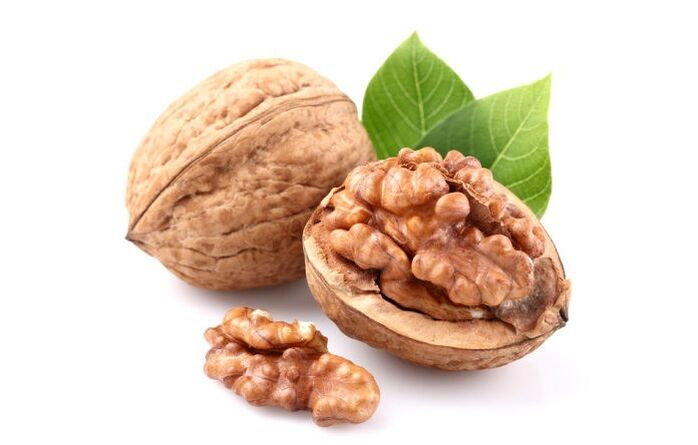
Nutrient-rich nuts should be present in the diet of a diabetic.
Nuts are rich in manganese, alpha-linolenic acid and zinc. These trace elements directly affect the drop in blood sugar levels. Also included in the composition of essential fatty acids inhibit the progression of angiopathy of internal organs and the defeat of atherosclerosis of the lower extremities. An important role is played by the fact that the nut practically does not contain carbohydrates, this is a simple answer to all questions about the role of the nut. It can be eaten with diabetes as a separate dish or as a dietary supplement.
Peanut
It is a dietetic product, particularly rich in amino acid composition, and its protein is vegetable, so it cannot be replaced by any protein of animal origin. Therefore, peanuts should be included in breakfast, lunch or dinner for each day. The protein found in peanuts is quickly included in the body's metabolism and is broken down, creating high-density glycoproteins in the liver to reduce sugar. This "pushes" cholesterol out of the blood vessels and breaks it down.
Almond nuts
They have the highest amount of calcium in their composition. Almonds are highly recommended for developing diabetic osteoarthritis that affects bones and joints. By eating 10 to 13 almonds per day, you will provide the body with the necessary trace elements, they will have a positive effect on the metabolism of carbohydrates. The diet for diabetes in adults should contain almonds.
Pine nuts
Pine nuts are delicious in the first place. In addition, they contain a huge amount of K, Ca, vitamins B and D, ascorbic acid, phosphorus and magnesium, they are necessary if the goal is to eat well. Pine nuts are used to prevent microangiopathy, inflammatory processes in the legs, and ARVIs in people with diabetic foot syndrome.
What you need to know about the glycemic index
The glycemic index is a measure of the effect of food after ingestion on blood sugar. Each product has its own glycemic index. If it is low (10-40 units), then the blood sugar level will increase slowly, if the index is high (more than 70 units), then rapidly. In this regard, anyone with diabetes is simply required to know the glycemic index of what they are eating.
If in doubt, we strongly advise against taking risks, even if the disease is still in its early stages. Because all foods with a high index should be stopped. Products with an average index (if they are not on the prohibited list), it is sufficient to limit their use.
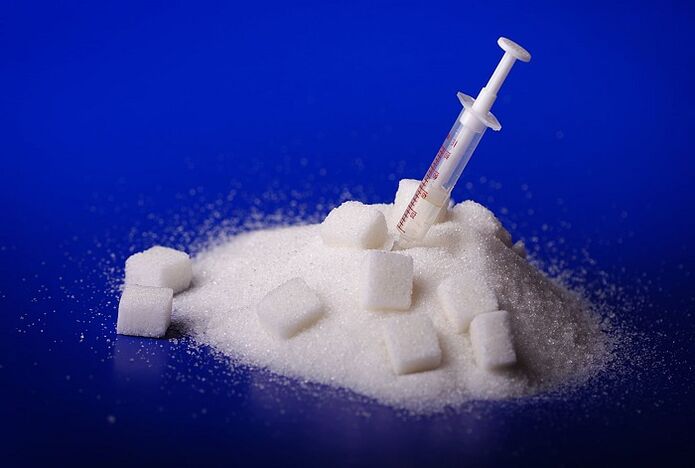
Diabetes brings a lot of discomfort to the patient, but by following a correct diet and constantly monitoring blood sugar levels, you can lead a fulfilling life.
The article provides basic recommendations on how to eat well in diabetes. Which diet is right for you? A qualified specialist who knows the individual characteristics of your body will understand. He will make a diet that lowers the level of sugar, compliance with which will help to fight an insidious disease.
Eat well with diabetes, harmonizing the glycemic index of foods, paying attention to all important aspects.
To be in a good health!






























